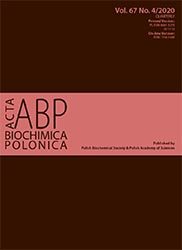Dexmedetomidine alleviates pulmonary ischemia-reperfusion injury through modulating the miR-21-5p/Nr4a1 signaling pathway
Abstract
This study aims to investigate the protection of dexmedetomidine (Dex) against pulmonary ischemia-reperfusion injury (PIRI) in the mouse model and reveal the mechanism in hypoxia reoxygenation (H/R)-induced mouse pulmonary vascular endothelial cells (MPVECs). The lung wet-to-dry weight ratio, histopathological features, and malondialdehyde (MDA) concentrations were measured. The H/R-induced MPVECs were exposed to Dex, and the cell viability, cell apoptosis and protein expressions were assessed by the Cell Counting Kit-8 (CCK8) assay, flow cytometry and western blot, respectively. In addition, the regulatory relationship between miR-21-5p and orphan nuclear receptor 4A1 (Nr4a1) was revealed by several assays, including the dual-luciferase reporter assay, real-time quantitative polymerase chain reaction (RT-qPCR) and western blot. We found that the Dex treatment significantly alleviated pulmonary injury and decreased the level of MDA and wet/dry weight ratio in PIRI mice. Dex treatment also increased cell viability, reduced apoptotic ratio and downregulated expression levels of Cleaved Caspase-3 and Cleaved Caspase-9 in H/R induced MPVECs. Furthermore, the expression of miR-21-5p was upregulated, while Nr4a1 was downregulated by Dex in a concentration-dependent manner in H/R induced MPVECs. Moreover, Nr4a1 was verified as a target of miR-497-5p. Overexpression of Nr4a1 could reverse the protective effects of Dex on alleviating H/R-induced injury in MPVECs. Taken together, Dex treatment attenuated ischemia-reperfusion induced pulmonary injury through modulating the miR-21-5p/Nr4a1 signaling pathway.
Acta Biochimica Polonica is an OpenAccess quarterly and publishes four issues a year. All contents are distributed under the Creative Commons Attribution-ShareAlike 4.0 International (CC BY 4.0) license. Everybody may use the content following terms: Attribution — You must give appropriate credit, provide a link to the license, and indicate if changes were made. You may do so in any reasonable manner, but not in any way that suggests the licensor endorses you or your use.
Copyright for all published papers © stays with the authors.
Copyright for the journal: © Polish Biochemical Society.


